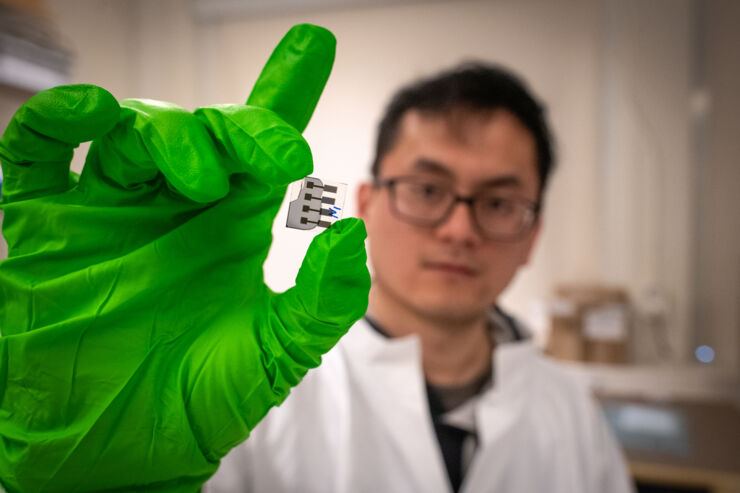Mar 27 2020
Linköping University scientists have identified a new quantum phenomenon that controls the formation of free charges in organic solar cells.
 A remarkable waveform appeared in Qingzhen Bian’s experiment. Image Credit: Magnus Johansson.
A remarkable waveform appeared in Qingzhen Bian’s experiment. Image Credit: Magnus Johansson.
“If we can properly understand what’s going on, we can increase the efficiency,” stated Olle Inganäs, professor emeritus from Linköping University.
Qingzhen Bian, a doctoral student, got the surprising results while performing an experiment to improve a solar cell material containing an acceptor material and two light-absorbing polymers.
Bian was later asked by Olle Inganäs, professor emeritus in the Division of Biomolecular and Organic Electronics, to redo the experiment to rule out the chances of measurement errors.
The same thing occurred in repetitive experiments and also in experiments performed both at Linköping University and by collaborators in Lund—that is, as a photocurrent occurred in the solar cell material, a small periodic waveform that lasts only for a few hundred femtoseconds emerged in the signature from the optical absorption. This phenomenon puzzled the researchers.
The explanation has now been published in the Nature Communications journal.
Remarkable Waveform
Some background: Excitons can be defined as bound electron-hole pairs that exist in the polymer. A single exciton is formed when light in the form of photons is absorbed by a semiconducting polymer. The electrons are not discharged and hence the photocurrent—the transport of charges—does not emerge.
But these electrons can be released by combining the electron-donating polymer with a molecule that accepts electrons. Only then, the electrons can take a small leap to become free, and the energy loss is kept to a minimum. The photocurrent is transported by the electrons and the holes, allowing the solar cell to generate electricity.
While this phenomenon has been known for a long time, the unusual waveform subsequently occurred in the experiment performed by Qingzhen Bian.
The only conceivable explanation is that coherence arises between the excited system and the separated charges. We asked the quantum chemists to look into this and the results we obtain in repeated experiments agree well with their calculations.
Olle Inganäs, Professor Emeritus, Division of Biomolecular and Organic Electronics, Linköping University
Coherence Arises
Atoms vibrate in the quantum scale, and they vibrate more rapidly upon heating. These vibrations interact with one another in a certain way and with the activated electron system—the phases of the waves follow one another, resulting in a state of coherence.
The coherence helps to create the charges that give the photocurrent, which takes place at room temperature. But we don’t know why or how yet.
Olle Inganäs, Professor Emeritus, Division of Biomolecular and Organic Electronics, Linköping University
The biological world reflects the same kind of quantum coherence.
“An intense debate is ongoing among biophysics researchers whether systems that use photosynthesis have learnt to exploit coherence or not. I find it unlikely that millions of years of evolution have not resulted in the natural world exploiting the phenomenon,” added Olle Inganäs.
If we understood better how the charge carriers are formed and how the process is controlled, we should be able to use it to increase the efficiency of organic solar cells. The vibrations depend on the structure of the molecule, and if we can design molecules that contribute to increasing the photocurrent, we can also use the phenomenon to our advantage.
Olle Inganäs, Professor Emeritus, Division of Biomolecular and Organic Electronics, Linköping University
The study was mainly sponsored by the Knut and Alice Wallenberg Foundation.